Hey there! This site is reader-supported and we earn commissions if you purchase products from retailers after clicking on a link from our site.
Although homebrewers often don’t care as much about the ingredients in their brews as wine makers do, there are some occasions where it pays to look for the best hops available. There are well over a hundred types of Humulus lupulus out there, but there are only four that are considered top tier. That would be the noble hops, the ones that are both aromatic and bitter and have been utilized in traditional recipes for centuries.
What makes noble hops so special? How do you know which kind to use? Here is everything you need to know about noble hops, including how to use them and where to get them.
What Are Noble Hops?
Okay, so maybe noble hops aren’t the sovereignty over the whole hop kingdom, but they are considered traditional. The four noble hops are Saaz, Spalt, Hallertauer Mittelfrüh, and Tettnanger.
Noble hops is a phrase that has only been around since the 1980s, so you won’t find centuries of history about the hops. Plus, there is no standard about which hops are traditional and what varieties belong in each hop category. The one thing that most brewers and beer masters agree upon is that you use any of the four noble hops to get yourself the most classic flavoring.
This isn’t why noble hops deserve their title, however. The real reason noble hops are so great is their balanced flavor. Within each noble hop, you get a blend of aromas, spice, and bitterness that is well rounded and flavorful.
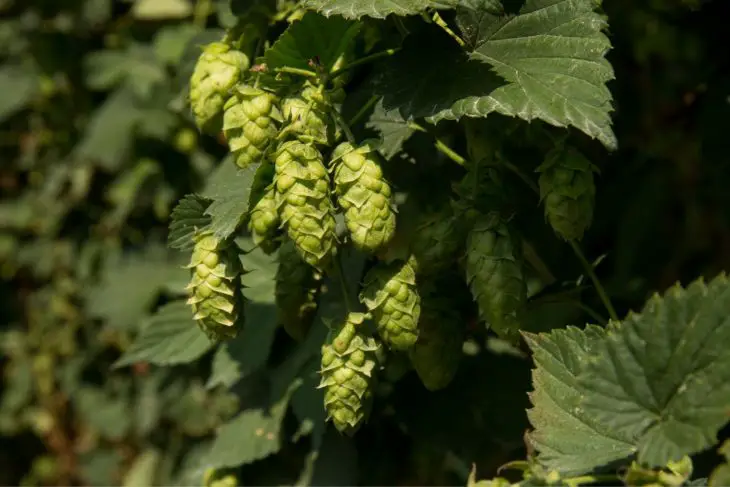
The Four Noble Hops
The noblest of hops include Tettnanger, Hallertau Mittelfrüh, Saaz, and Spalt hops. Interestingly, Saaz, Spalt, and Tettnanger hops all have a common ancestor, as revealed by science. It’s possible that these three were crossbred somewhere along the line, so they are all in the Saazer group of hops. That means that the Mittelfrüh hop is the only one not related to the rest.
Tettnanger Hops
Profile: Mild floral notes, earthy grassiness, and spicy
You’re going to see Tettnanger hops called several different names, including Tettnang Tettnanger, German Tettnang, Deutscher Fruhhopfen, and Schwetzinger. This is partially because of the region, but also because of where Tettnanger hops are grown. Unlike other noble hops, Tettnanger is hardier and has a global presence. This also increases the likelihood that any Tettnanger hops you purchase are going to be hybrids. It’s common practice for some Tettnanger hops to be mixed with Fuggle hops, which means it’s not the true noble hop varietal.
Tettnanger hops are more subtle that Spalt and Saaz hops; the herbal and floral notes are far more balanced. You can use it for both aromatics and bittering when brewing at home. Tettnanger is a favorite selection for Helles and Pilsner beers, but you can also use it for Tripels and Saisons.
Spalt Hops
Profile: Woody, floral, spicy
The city of Spalt in Germany’s Bavarian region has been growing hops since the eighth century, but they didn’t gain renown for their hops until the fourteenth century, when they possibly crossbred Saaz and Spalt hops.
Spalt hops were the first to gain the German hop seal in 1538. Such a feat is made possible through regional commitment and quite a bit of documentation. Similar to Saaz, Spalt hops are known for their hoppy qualities, as well as fruit and herbs. You will know a beer is hopped with Spalt when you get either peppery, woody, or banana-like flavor or scent.
Don’t confuse Spalter Select and Spalt hops. They are different varieties and are not adequate substitutes for one another.
Saaz Hops
Profile: Slightly sweet, spicy, and floral
While these hops are cultivated in Žatec, a Czech city known throughout the world for their hops, the name actually comes from the German pronunciation. You might also see Saaz hops called Czech Saazer. Taste-wise, Saaz hops are positively hoppy, and they will add aromatic notes of lavender, cedarwood, bacon, and tarragon to your brews.
Saaz hops look different from other hops when growing, because they have red bines. These hops are incredibly delicate and susceptible to mildew. Hop growers and scientists have cloned Saaz plants nine times to help preserve the species. Thank science for saving this miraculous plant from extinction!
Hallertauer MittelfrühHops
Profile: Spice, hints of citrus fruit, earthy, and herbal
As mentioned earlier, Mittelfrüh hops are not related to the others, making the origin of this hop somewhat of a mystery. While it could be connected to the Saazer family, the genetics of the Mittelfrüh hop are very distinct. One hypothesis is that the Mittelfrüh hop is from German landrace, or the cultivation of a wild breed of hop.
Since this variety is vulnerable to common wilt disease, there are numerous growers these days who are mixing Mittelfrüh hops with other varieties to make them more resilient. Keep this in mind if you plan on purchasing classic Hallertau Mittelfrüh hops.
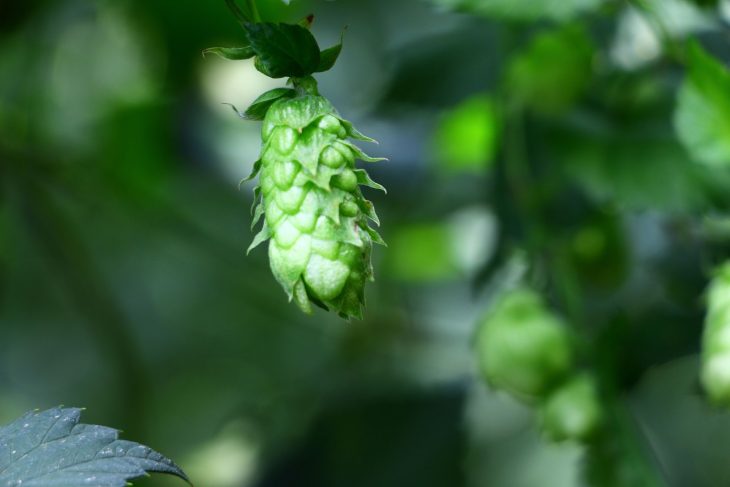
Not As Noble
There are some brewers, beer historians, and hop growers who believe that Strisselspalt and Hersbrucker Spät varietals are noble hops. While these hops do have great characteristics, they do not meet the standards of noble hops. You can often use Strisselspalt and Hersbrucker Spät hops in recipes for lagers, French and Belgian ales.
What’s The Difference Between Hops and Noble Hops?
One way to think about noble hops is by comparing them to prized wine grapes. In the same way the best champagne grapes come from the Champagne region in France, the best Tettnanger hops are going to come from Tettnang, Germany. Yes, you can get noble hops grown elsewhere, and you might be able to grow your own, but they wouldn’t taste the same.
And so while buying regular hop varietals can be as easy as going on Amazon or eBay, getting your hands on noble hops grown in their original region is complicated…and expensive.
The chemical difference, however, is what truly separates noble hops from regular hops. Most regular varieties have higher alpha acid levels than noble hops, meaning that Spalt, Saaz, Tettnanger, and Mittelfruh hops are ideal for adding into the wort during the last 5-15 minutes of the boil.
Alpha acids are how brewers and homebrewers alike select their hops. Without alpha acids, beer wouldn’t be bitter. This is why hops with higher levels of alpha acids are used for bittering. When you want hops for flavor or aroma, you need ones with lower alpha acid levels.
Noble hops also have greater quantities of hop oils—a special kind of essential oil. While hop oils only make up around 4 percent of every cone, they have a tremendous impact on the flavor of your beer.
It’s All About Essential Oils
Since hop oils are part of the reason you want noble hops, it’s important to understand them. Besides, you’ll notice that hop catalogs contain chemical tables. Knowing about the four essential hop oils will help you read those tables a bit more easily.
The essential oils in hops include myrcene, humulene, caryophyllene, and farnesene.
Myrcene is found in American hop varieties and is accredited with giving beer pine and citrus scents. Many traditional beer brewers tend to avoid hops that are high in myrcene, due to the pungency of the oils, but it depends on the flavor profile you’re aiming for.
Caryophyllene and humulene are often written as an H/C ratio. Noble hops have greater amounts of humulene than caryophyllene, making them more aromatic. One example would be a 3:1 H/C ration, meaning that the hop is spicy and herbal. A higher caryophyllene amount would give the beer a more woody scent.
Lastly, farnesene, the least understood of the essential hop oils. The amount of farnesene differs between hop types, but Saazer hops have far more of this oil than ones that don’t belong to this family. It’s believed that farnesene helps develop their hoppy characteristics.
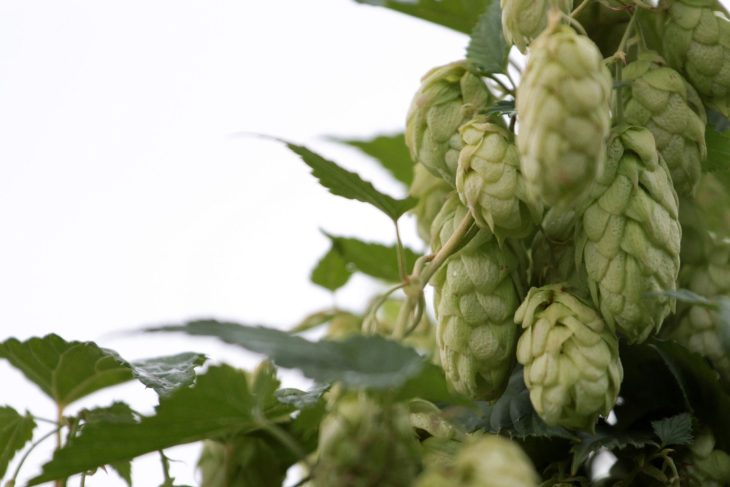
How to Use Noble Hops in Homebrewing
Noble hops are perfect for every stage of homebrewing. You can use the hops for bittering, dry hopping (Spalt hops are exceptional for this), and late additions to the boil for aroma. Noble hops are loved for their grassy, floral, and herbaceous aromas and flavors.
Noble hops perform best in the following beer styles:
- Saaz: European lagers, light lagers, pilsners, and Belgian ales
- Spalt: Pilsners, German lagers
- Tettnanger: Wheat beers, German ales (Hefeweizen, Altbier, and Kolsch), and German lagers
- Hallertauer Mittelfrüh: Pilsners and any style of lager
Bocks, American Wheat Beer, and Blonde Ales can also be flavored with noble hops.
Of course, we recommend experimenting with a variety of hops and noble hops. When you have them in your stock, you can create a couple of brews to see how noble hops affect the flavor.
Do keep in mind that noble hops have an alpha acid concentration of 3.0-5.5%. Because of this, you might have to bitter your beer with hops that have higher levels of alpha acid. However, if you choose to bitter with noble hops, you’ll get better foam retention and a more rounded flavor.
How To Substitute Noble Hops For Homebrewing
There is something regal and royal about noble hops. These hops are grown according to the highest of standards so that they are the finest you can purchase. But because of their quality and popularity, noble hops can be challenging to procure. So what do you do?
Turns out, there are plenty of regular hops that can be substituted to match the qualities of noble hops. It doesn’t matter if the hops come from Europe, America, or Australia or New Zealand.
Look for hops that have a similar alpha acid profile. That way, you can make the adjustments to reach the desired flavor and IBU. Be sure to check our extensive list of hops varieties to see all the kinds that are available.
Here are some direct substitutions:
- Tettnanger → Saaz and Fuggles hops
- Spalt → Saaz, Strisselspalt, and Tettnanger hops
- Saaz → You can use Sladek, Lublin, Sterlin, and Tettnanger hops
- Hallertauer → Mt. Hood and Liberty hops
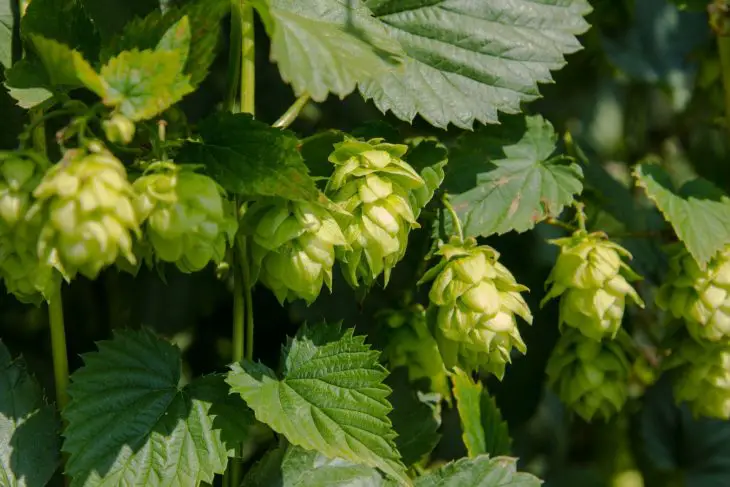
Purchasing Noble Hops
You can find noble hops online or at your local brew supply shop. Sounds easy, but you’re going to have to pay attention to where those hops came from and how long they have been on the shelf.
Seek The Source
Hop plants are influenced by the soil composition, altitude, climate, and farming practices. The flavors of the plant develop accordingly, meaning that even the slightest difference could greatly affect how a hop tastes and smells.
Back when brewers first started brewing beer, variety mattered far less than what was available. In fact, selecting hops was highly random. Who’s to say that humans simply went by smell and brewed their beer from there? These days, hop breeding involves considering pest resistance, hardiness, brewing purposes, and cross-pollination.
So you could order some noble hops and try to grow hops on your own, but there is a very high chance that the noble hops are going to taste different from the ones grown in their home region.
When looking to purchase noble hops, be sure that the country of origin—or preferably, the region of order—is listed on the packaging. Make sure your Saaz hops are coming from the Czech Republic and that your Tettnang, Mittelfrüh, and Spalt hops are sourced from Germany.
Storing Noble Hops For Maximum Freshness
Air and light can damage noble hop cones. Blame that on the essential oils. Unfortunately, noble hops don’t keep well in storage, meaning that you have to get and use them while they’re fresh.
Storing noble hops for longer periods of time will greatly reduce the amount of alpha acids and essential oils. Regardless of how the hop is processed and sent to you, it’s going to happen. This is why you want the date of packaging and origin written plainly by the seller, because you’re going to need to know how long you have to use them.
If you do have to store your noble hops, aim for whole hops, since they will stay fresh when stored at freezing temperatures. In pellet form, you get a bit more time, but you will need to put the pellets in an air-tight container in the refrigerator. Unfortunately for anyone outside of Europe, transporting noble hop pellets is risky.
Before you even get your noble hop pellets, they could be damaged or spoiled.
Sadly, there’s not much that can be done. Check if the package is swelling—a sure sign your hops have spoiled—when opening the shipment. If the package is cooler, the swelling may be less obvious. Why is this bad? A bloated box means your pellets were exposed to oxygen, causing oxidation. Your hop pellets will have less oils and alpha acid and impart foul flavors into your beer.
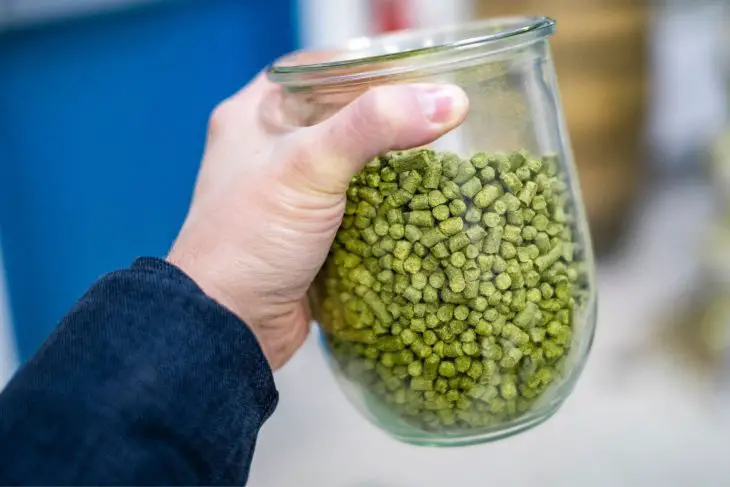
Now You’re Hopped Up
Noble hops are a worthwhile addition to many beer recipes because of their clean flavor and slight bitterness. If you plan on making a European style brew, such as a Czech Pilsner or a Belgian ale, be sure to toss in some noble hops. Not only will you get the most accurate brew, but you’ll see how each hop brings out nuances and flavors you’ve yet to experience.
Recommended Reading
How and When to Harvest Hops
Whether you are a gardener or a home brewer, hops are a fantastic and easy plant to grow at home. Learn how and when harvest hops!
How to Use and Read a Hydrometer
Knowing how to read a hydrometer will come in handy. This guide will help you master the art of using a hydrometer when brewing up beer, mead, wine, or something else.
What is the Best Brewing Sanitizer?
One of the things you need to know before you even pick up your first homebrewing recipe is which brewing sanitizer is the best.
Bottle Priming: How to Use Priming Sugar to Bottle Beer
As with all things related to home brewing, using priming sugar is an art that requires some skill and knowledge to get right. If you have ever wondered about bottle priming, you have come to the right place.
The Complete Guide to Growing Hops At Home
Hops are expensive, so growing hops at home is an economical choice. Besides, wouldn’t it be nice to tell others you made your beer with homegrown hops?
Home Brew Beer Ingredients List
There is a lot that goes into beer, but the main ingredients are your hops, grains, water, and yeast. Without that, you wouldn’t get the heavenly delight we call beer.

